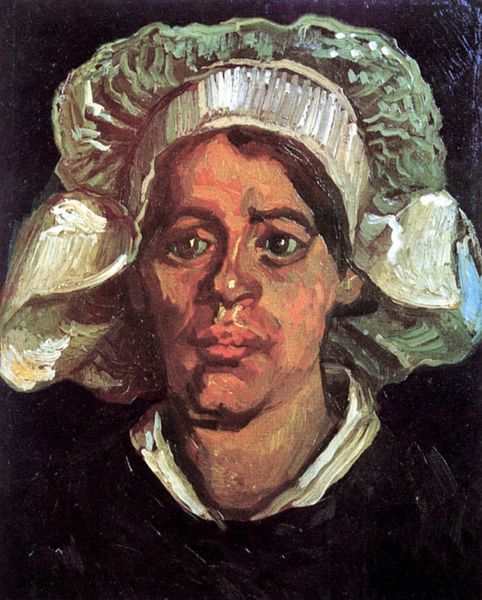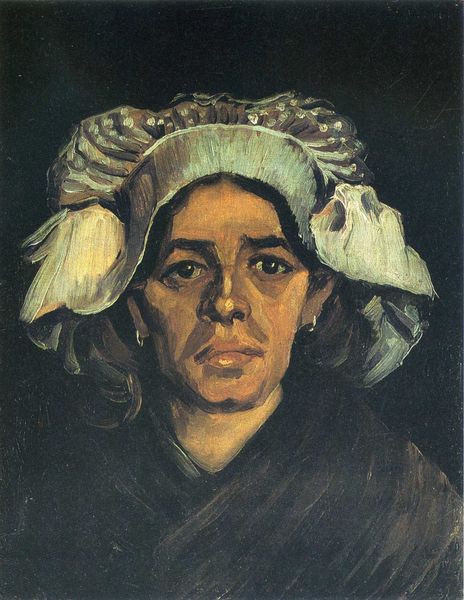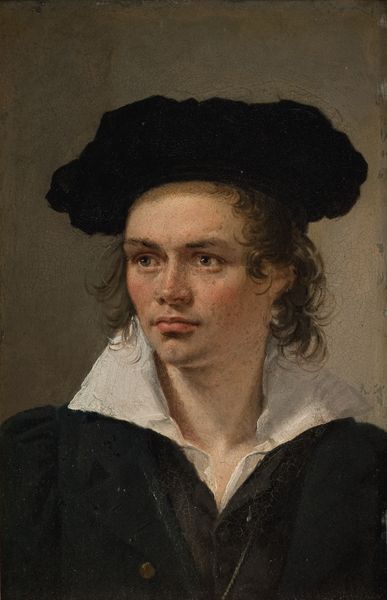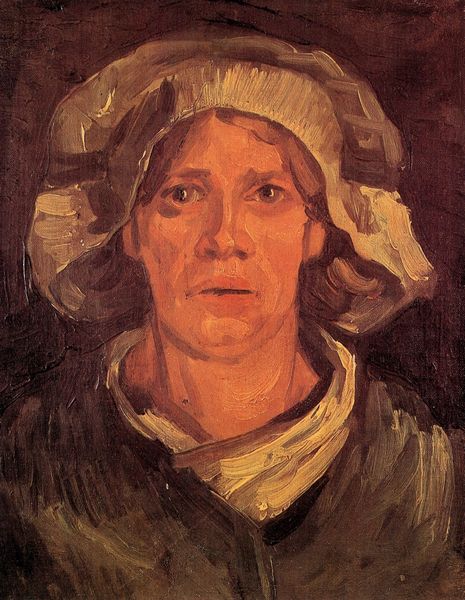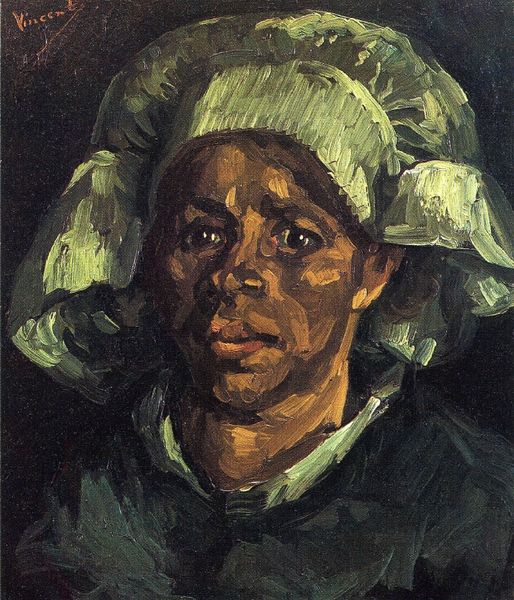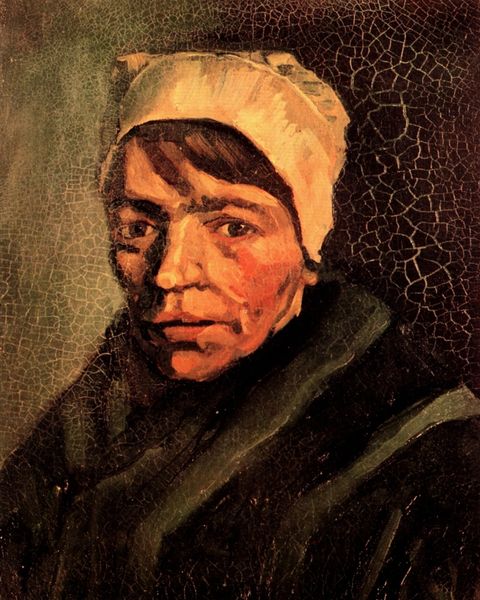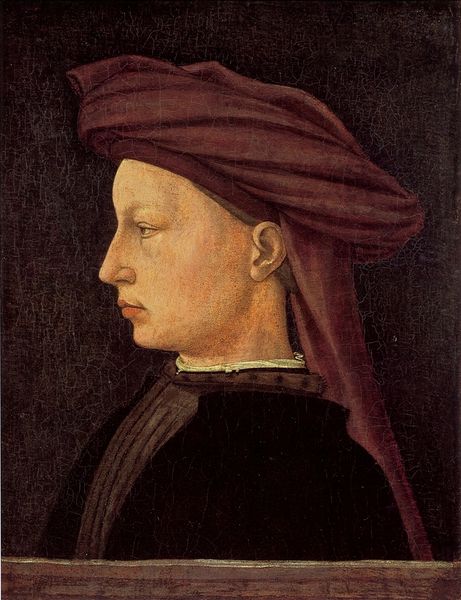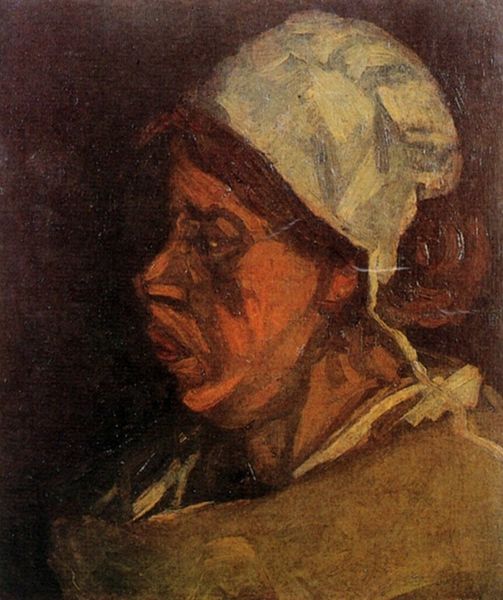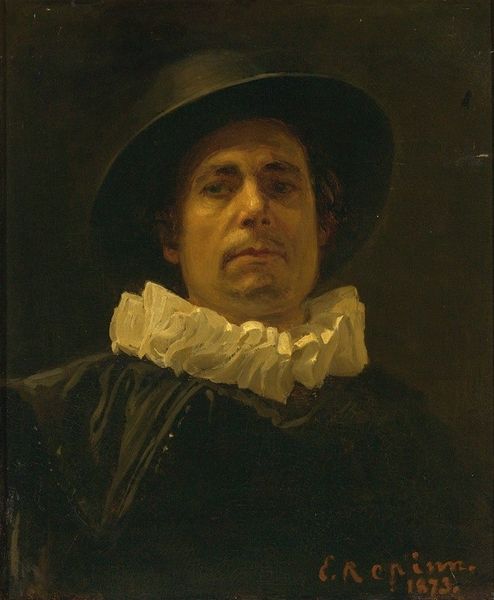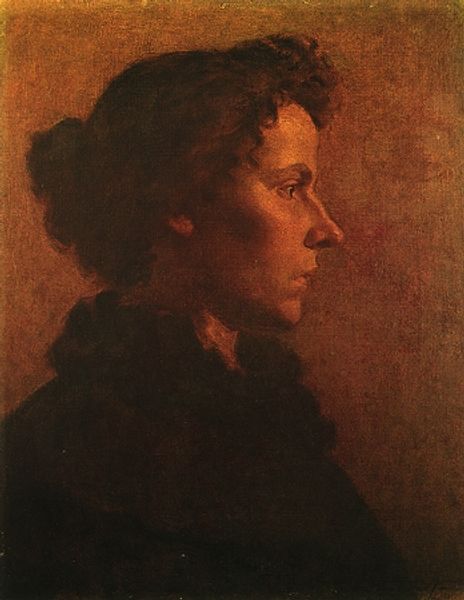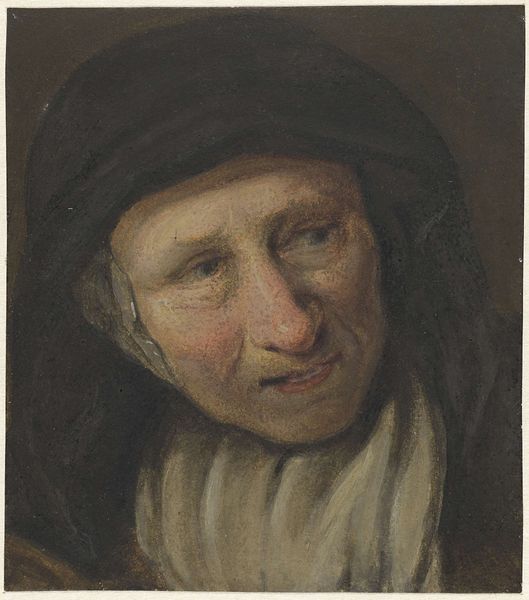
painting, oil-paint, impasto
#
portrait
#
dutch-golden-age
#
portrait
#
painting
#
oil-paint
#
impasto
#
post-impressionism
#
realism
Copyright: Public domain
Curator: Here we have Vincent van Gogh's "Head of a Peasant Woman with White Cap," painted in 1885. It’s part of a series he created depicting local peasants in Nuenen, Netherlands. Editor: My first impression is one of stark simplicity, almost severity. The dark palette emphasizes the subject's weary, yet resilient face. The impasto technique adds a rough, tactile quality. Curator: Indeed. These portraits were exercises in understanding and depicting the working class. Van Gogh was deeply invested in capturing their lives, which he saw as authentic and connected to the earth. The social context here is key. Van Gogh empathized deeply with these peasants, and saw beauty in their hardship. Editor: Looking closer at the brushwork, notice how he builds form. Short, directional strokes define her features and the folds of her cap. It is less about mimetic accuracy and more about the raw physicality of paint to create depth and volume. What strikes me about the planes of her face, there is no softness, even if the strokes create an almost sculptural quality to the cheekbones. Curator: He deliberately avoids idealization. This aligns with the broader Realist movement. But even there, his is a very raw Realism; these portraits function almost as social documents reflecting the hardscrabble reality of rural life. Editor: Absolutely. Her gaze holds a profound sense of weariness. It's interesting how the cap, while ostensibly a detail of her clothing, frames her face like a halo—although there's no religious symbolism here, but perhaps hints at inherent dignity. It creates a formal contrast, and draws you back into considering how a halo in religious painting could have created this psychological idea first, to be deployed secularly later. Curator: Yes, and understanding the context of his time, with growing socialist movements and a heightened awareness of social inequalities, enhances the work's significance. These portraits transcend mere likenesses; they are a statement about class and representation. This subject, we can say with some confidence, exists within her station and time in history in Van Gogh’s perspective. Editor: Seeing it that way, I think my takeaway here has shifted. The portrait, even in its blunt execution, grants an incredible depth to someone so clearly marginalized, in his social orbit, by both poverty and gender.
Comments
No comments
Be the first to comment and join the conversation on the ultimate creative platform.
